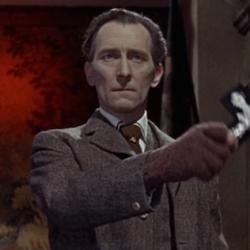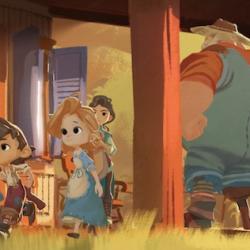Teju Cole pays tribute to Krzysztof Kie?lowski’s 1996 film Red in the December 22 issue of The New Yorker.
The film tells a small, quiet tale, a film of “hushed intensity” and conveys “the sense of inner workings not fully grasped.” A woman in Geneva, Valentine, runs over a dog. She tracks down the owner, a retired judge named Joseph, and the film tracks their friendship, which is “not a romance but a series of tenderly exchanged confidences.” Meanwhile, Valentine’s neighbor, a law student, discovers that his girlfriend has betrayed him. As Cole says, “The three characters move through perfectly average days—unlocking an apartment door in time to catch a ringing phone, stopping at a kiosk to buy a newspaper—but their gestures seem to be part of a larger pattern.”
The film builds that feeling by highlighting the intersections and coincidences of the characters’ lives: “Kie?lowski explores the experiences of two people who live in the same city, visit the same places, touch the same doorknobs. Does their proximity have any meaning? Will they meet? He also looks at episodes from Joseph’s life that are curiously reiterated in Auguste’s: both drop a book, and it opens to a crucial page; both abandon their dogs.”
The feeling that an elusive Providence orchestrates things intensifies as “unforeseen encounters can subtly pile up and determine the course of a person’s life. In any narrative, there is the material that moves the story forward. But the storyteller also includes objects or events that hint at a pattern of signification swirling above the surface, part of the story’s logic but just out of reach.”














